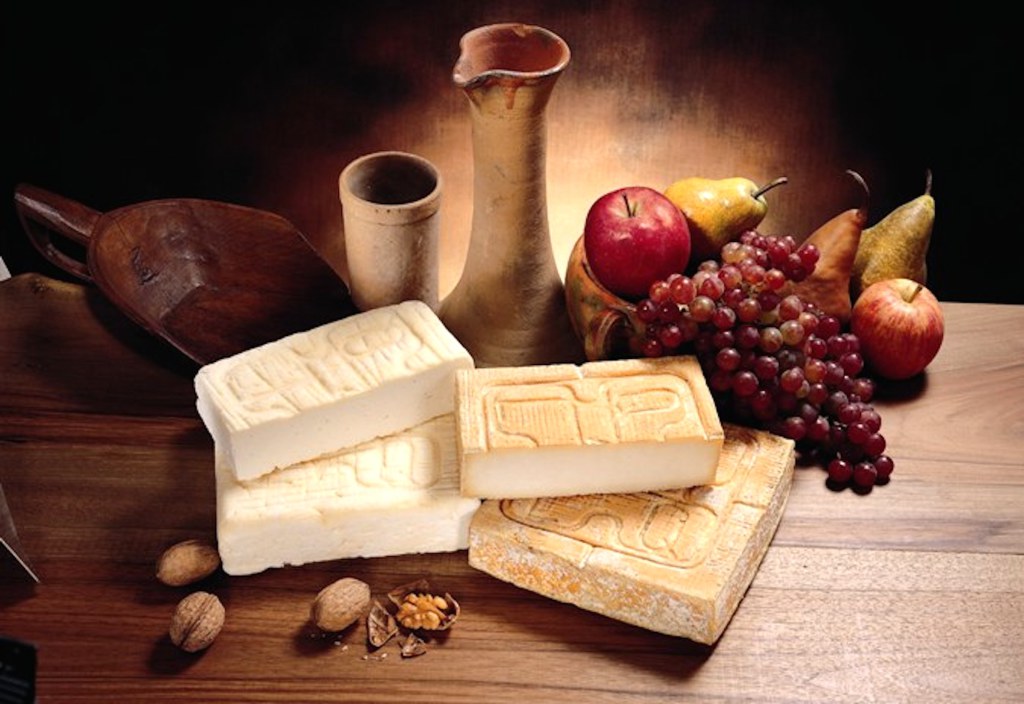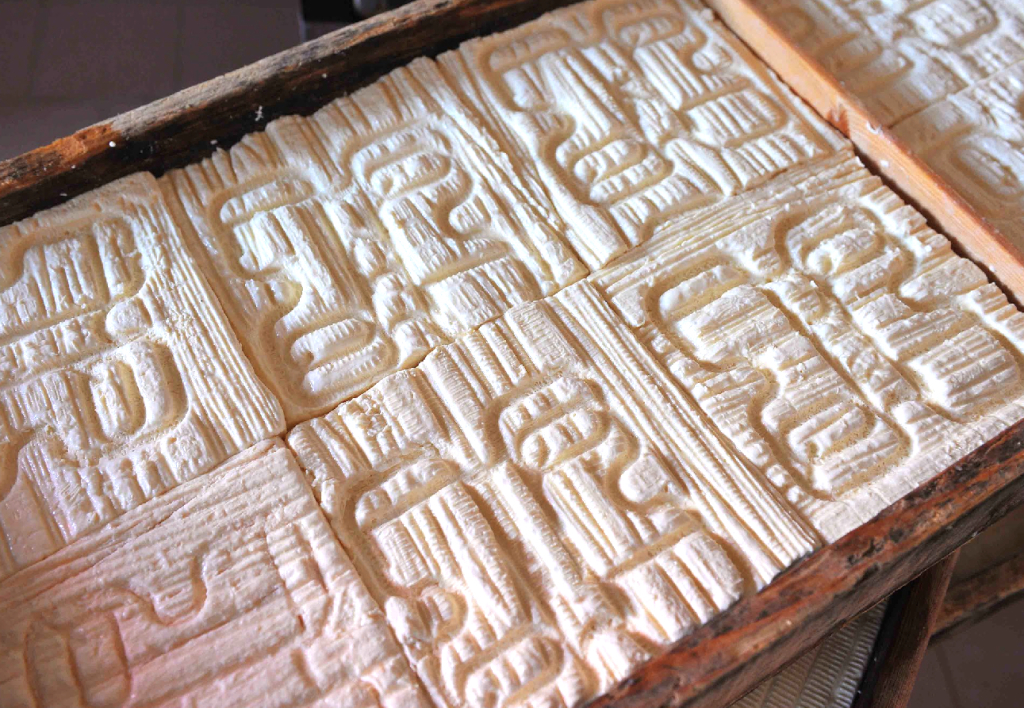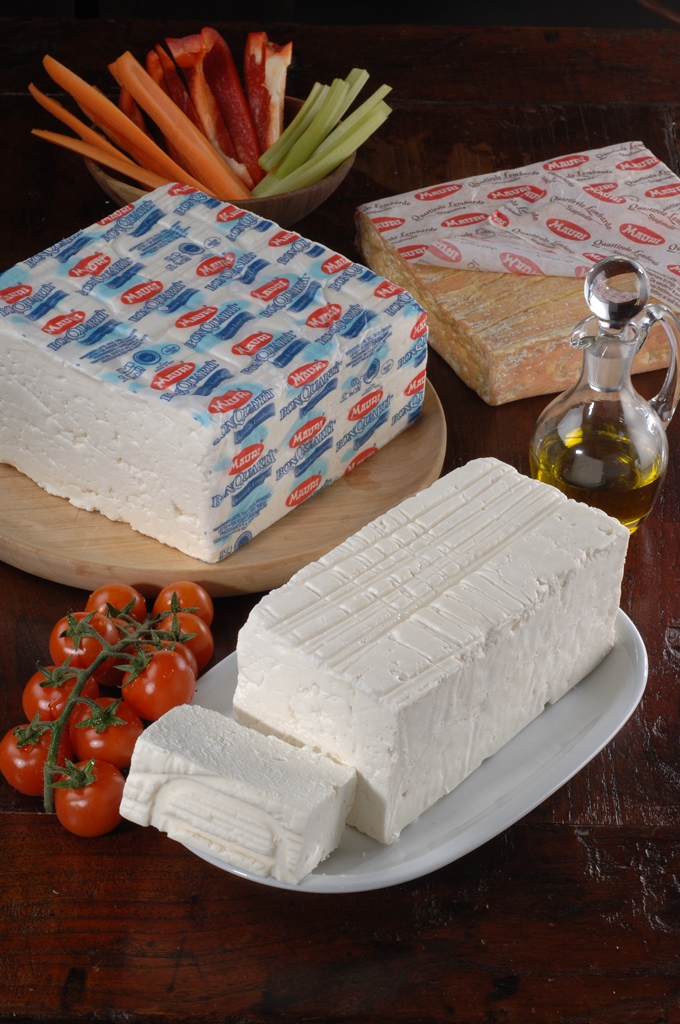 Quartirolo, a soft uncooked cheese, is one of the main character of the story of Italian cheeses, as it has been present for more than a millennium. It is marketed both fresh and ripe, in square cheeses, with the typical embossed branding with the letter Q on their back. Its slightly sweet taste on the whole, becomes aromatic and pleasantly acidulous in the middle. These great qualities allowed this cheese obtaining since 1993 the Protected Denomination of Origin.
Quartirolo, a soft uncooked cheese, is one of the main character of the story of Italian cheeses, as it has been present for more than a millennium. It is marketed both fresh and ripe, in square cheeses, with the typical embossed branding with the letter Q on their back. Its slightly sweet taste on the whole, becomes aromatic and pleasantly acidulous in the middle. These great qualities allowed this cheese obtaining since 1993 the Protected Denomination of Origin.
The production 
Quartirolo cheese is produced with whole or partly skimmed cow's milk coming from two or more milkings. In past centuries it was only produced in late summer, with the milk of cows which were fed with ‘quartirola’ grass, that is to say the fourth cut, in September (the Italian word ‘quarto’ means ‘fourth’). Today this cheese is produced throughout the year, with a processing very similar to the one of ‘Taleggio’ cheese, another dairy Italian excellence, to which it resembles. Its cheese rind, which is not subjected to any treatment, is soft, moist, and has some cracks on its surface. Its colour is white in the soft paste cheeses, while in the ripe cheeses it is gray with large reddish and orange shades. Its taste, as well as its friable, granular, moist consistency, are pleasant. When Quartirolo ripens, it becomes creamy and compact. Its white colour becomes deep straw-yellow and its smell gets even more pleasant and characteristic.
More than a millennium of history
When in September the summer season finished, the cows started to live again in their stables down in the valley. Here, herdsmen fed them with the little grass of the fourth summer cut: the so called 'quartirola' grass, an especially nutritious and fragrant grass which was the last ration of fresh forage before winter, very rich in wild flowers. Thus the milk produced was used for producing a scented and tasty soft cheese, named ‘quartirolo’.
Quartirolo cheese was born in the mountains of Val Sassina, a valley in the Lombardy Alps in the province of Lecco. The production area has expanded over the years in large part of Lombardy, and in particular in the provinces of Bergamo, Brescia, Como, Cremona, Lodi, Milan, Pavia, Varese. However, the companies which have produced this cheese for centuries are located in Val Sassina. They have adopted industrial production without giving up the characteristics of naturalness.
Throughout Europe
The yearly production of Quartirolo does not undergo significant changes during the year, for a global amount of about 4,000 tons. The export mainly concerns its ripe version, which, despite the fierce competition of similar cheeses, such as the Danish and German ones, manages to involve a specific market segment: the Quartirolo cheese is known in Switzerland, Austria, Germany, Netherlands, and Belgium. The Russian market is the last one, but it is also the one in which the amount of imported product records the highest increase. In this case, too, the ripe version raises the greater interest.
The identity of packaging
Technology, research, quality of the milk, product specifications, are guaranteed by the specific marking 'Quartirolo Lombardo '. This brand must be reported on the cheeses, bearing the geographical origin of the product and the legislative details which recognize the DOP. Quartirolo is covered by a simple wrapper which evokes the mountains of Lombard dairy tradition, in which white predominates, a vegetable parchment that allows the proper preservation and ventilation of the cheese.

